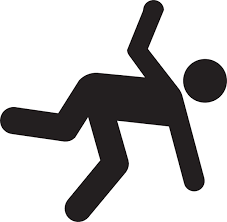 In our last article, we discussed what the term “balance” refers to and a little bit about each of the systems that work together in order to improve our stability. It is important to understand that many people do have balance deficits, and unfortunately falls are very common, especially as we age. According to the CDC, studies show that approx. 1 out of 3 older adults (65+) fall each year. These falls can lead to significant injuries, like fractures and brain injuries, and can also induce a significant fear of falling again. But there are simple ways one can help to reduce their risk of falling.
In our last article, we discussed what the term “balance” refers to and a little bit about each of the systems that work together in order to improve our stability. It is important to understand that many people do have balance deficits, and unfortunately falls are very common, especially as we age. According to the CDC, studies show that approx. 1 out of 3 older adults (65+) fall each year. These falls can lead to significant injuries, like fractures and brain injuries, and can also induce a significant fear of falling again. But there are simple ways one can help to reduce their risk of falling.
- Reduce trip hazards at home by removing rugs; maintain clear pathways by removing clutter.
- Improve lighting: Make sure the area you are walking in has good lighting to see your surroundings, especially when getting up at night.
- Install grab bars in bath, shower, and/or around the toilet to avoid slipping.
- When you are using an assistive device such as a walker, make sure you appropriately scan your surroundings for any potential trip hazards, surface changes, etc.
- Be aware that medications can have side-effects that can cause dizziness or fatigue. Discuss with your doctor which over the counter and/or prescription medications may have some of these side-effects.
- Exercise regularly– this is essential to aiding in fall prevention. Having appropriate core strength and flexibility can significantly aid in improving overall stability to reduce fall risk.
- Physical Therapy– balance exercises can be done on stable and unstable surfaces through functional movements which will improve stability and decrease fall risk.
Through physical therapy treatments at ProActive you can build the appropriate muscle strength, improve flexibility, and improve your balance through a variety of exercises, including our Biodex Balancing System. To learn more about how you can improve your balance and stability, or if you have any concerns regarding your risk of falling, contact us at ProActive Physical Therapy and Sports Medicine.
Reference: Center for Disease Control and Prevention. (2015). Falls among Older Adults: An Overview. Retrieved from http://www.cdc.gov/homeandrecreationalsafety/falls/adultfalls.html.

